 You can grow beans for their fresh pods or you can grow them for their shelled seeds. There are basically two types of beans available for growing; snap beans which are grown for their pods while lima beans which are grown for the seeds inside the pods. Since they don’t take up much room all gardeners should be growing them in their backyard garden. In this article you will discover how easy it is to grow tender and sweet snap beans.
You can grow beans for their fresh pods or you can grow them for their shelled seeds. There are basically two types of beans available for growing; snap beans which are grown for their pods while lima beans which are grown for the seeds inside the pods. Since they don’t take up much room all gardeners should be growing them in their backyard garden. In this article you will discover how easy it is to grow tender and sweet snap beans.
Contents
Two Types of Snap Beans
There are generally two types that you can start growing in your garden. First there are bush beans which are faster maturing and take up very little space because of their small size. You also can grow pole beans which takes a little bit more work, but the yields can be up to three times larger than bush ones.
Bush Beans
With bush types there is very little work involved and with the fast maturing pods you can actually grow a second harvest once the first batch of beans are done. Sometimes bush beans can get a little heavy and you may have to stake them to prevent them from falling to the ground. If this is your first time growing beans I would start with these bush ones first.
Pole Beans
Pole beans will be a step up from growing bush types. They are very similar except for the fact that pole types will grow runners which will love to climb and they can grow up to 12 feet tall. You will need to setup a trellis before planting these seeds and there are a few methods that you can consider when building your own trellis.
Three Methods for Staking Your Pole Beans
The Single Stake Method
This is pretty straight forward and all you will need is a strong stake and plant your seeds around it and make sure that they wrap around it. I would definitely recommend a strong wooden stake for this particular method because pole beans can get pretty heavy with the amount of pods they produce. Avoid using metal poles because the vines will slide down the pole due to the smooth surface.
The Popular Teepee Method
This method is for gardens that do not have much room and you can plant many beans around them for greater yields. It is fairly simple and all you need is about four strong stakes and putting them in the ground at an angle. Make sure that the stakes meet each other at the top and then just tie them together with some rope only at the point where the stakes meet.
Pole and Rope Method
This is my favorite method and is the one I use every season for my pole beans. I take two eight foot poles (you can use longer posts if you prefer) and drill a couple of holes at one end of each post. I leave about four or five inches from the top when drilling in order to prevent the hole from warping when placing it in the ground.
I also have another pole that will go across horizontally which also has drilled holes at each end. I am able to make two ten foot rows since this post is a little bit more than ten feet across. Line up the holes from the pole that goes across with the holes on the two end posts. Place a bolt through the holes and place a nut at the end to make sure it is tight enough that it won’t move.
Once you complete the above steps all that is left is to apply the ropes over the horizontal pole and let the plants climb up them. I like to place the ropes after the seeds sprout and when they are producing the runners which will wrap around the ropes I have placed.
Planting Conditions for Bean Seeds
It is fairly simple to grow beans and all they need is proper temperature and some fertile soil. I would not plant them until the weather is a consistent 60-70 degrees Fahrenheit and most of water from the winter and spring rains have receded.
It is okay to plant them in moist soil, but when it is soggy and you place these seeds in the ground they will probably rot and not germinate at all. Dense soils tend to hold more water for longer periods while sandy soils will drain much better. If the soil is too dense it is a good idea to add some compost where you will be planting your seeds.
When it is okay to Transplant Beans?
Generally it is not recommended to plant beans inside and it is far more reliable if you sow them directly in the ground. In areas that have short growing seasons you can start them in peat pots which would allow you to get a head start. I would not plant them in plastic pots since they are not great for transplanting. Peat pots are the best way if you are going this route.
Very Little Spacing is Required
Bush beans only need about 3”-6” of space for producing a large crop of pods. At most I would plant seeds at six inches, but if you have less room I would then choose three inches apart instead. You can continue planting bush bean seeds every other week until a couple of months before the first frost of the year. This way you can get a much larger harvest.
You can also just plant one instance of pole beans and they will continue growing throughout the year until it becomes too cold for them to produce anymore. These seeds need a little bit more spacing and I would go with 10” between seed plantings. Make sure to put more than one seed every 10” inches. I recommend at least two or more and then thin them out if needed once they germinate.
Water Consistently for a Great Harvest
One of the more important aspects of growing beans is keeping the soil well watered once they have sprouted and are producing runners or flowers. During dry
spells it is recommended that you conserve moisture and one way to do that is laying down a thick mulch around all your plants. This also keeps down weeds and cools the soil which is good during the heat of the summer.
No Nitrogen Required?
Contrary to popular belief you don’t need to supplement your beans with a nitrogen fertilizer. They actually belong to the legume family which are able to extract nitrogen straight from the atmosphere from bacteria that is active along the roots.
If you were to provide too much nitrogen to any bean plant you would notice more leaves and fewer flowers. The best way for your plants to produce more flowers is to supply them with a fertilizer high in potassium such as kelp meal, wood ash, and even a seaweed fertilizer.
Pests That can Ruin Your Plants
There are many insects that can affect your beans plants and the most prevalent will be Mexican bean beetles. They are the most destructive and can seriously harm your plants and can even reduce your yield. Make sure to remove them including their larvae and eggs if you spot them on the undersides of leaves.

If you have bean beetles in your garden this is some of the damage that they can do. Look on the undersides of the leaves to find the larvae or their eggs.
There are many other insects that can cause a problem with your beans including: aphids, cabbage loopers, corn earworms, corn borers, Japanese beetles, leaf miners, stripped and spotted cucumber beetles, and spider mites. For more information on these pests visit my insect post.
Diseases
There are a few diseases that you need to be aware of when growing beans. Some of them include anthracnose, bacterial blight, mosaic, rust, and sometimes downy mildew. Check out my diseases post for more information on diseases and how to prevent and control them.
Harvesting All Your Amazing Beans
The best way for picking beans would be to use a pair of scissors instead of pulling them off the plant. Pulling them could lead to uprooting the plant which can potentially harm the plant and may stop producing tender sweet fruit.
You want to pick them just before the seeds in the pods become noticeable and start to turn yellow. I would check on your vines or bushes every day to see if there any to pick. Picking often will encourage growth and will give you a much better harvest.
Storing Beans

Beans are great for storing and you can either can them in jars or place them in air sealed bags in the freezer.
If you happen to have a large harvest and you can’t eat them all at once then try storing them either by freezing them or large mason jars with a pressure cooker.
Some Good Bush Beans to Plant
Blue Lake – One of the most popular and favorite beans that you can grow in your garden. Has a much longer season than most other cultivars.
My Favorite Pole Beans for Planting
Fortex – This is my favorite type of pole bean that I grow every year. There are many others, but this one is both an heirloom and stringless.

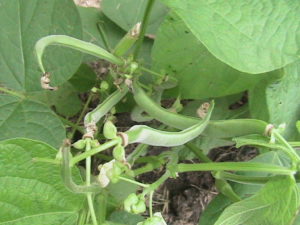

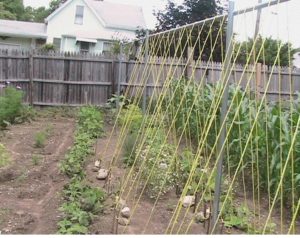
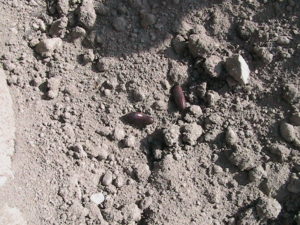
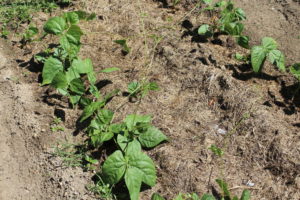

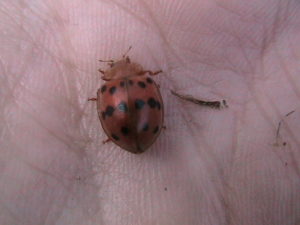
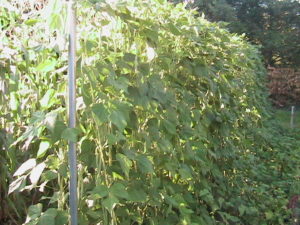

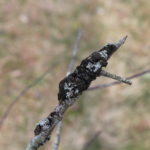
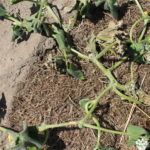
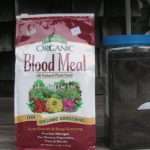
Recent Comments